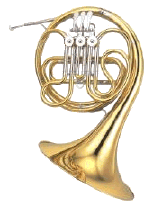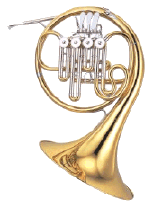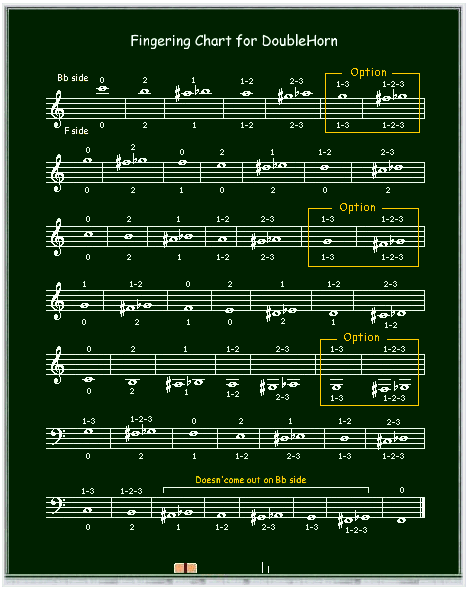Horns used in school windbands include F and Bb horns (single horns), and a double horn that combines the two.
 |  |
|---|---|
| F horn | Bb horn |
A double horn combines an F horn and a Bb horn, which can be switched at any time with the use of a thumb lever. Player can use the advantages of both horns, but the instrument is heavier and the tone is a little different from a single horn.
This is true for all instruments, adding more keys and tubes to an instrument makes it heavier and the sound becomes heavier (less responsive). Even a single horn is harder to play than a natural horn, which has no keys.
Apart from tone preferences, a single horn may be better for students who are just starting to play a French horn.
In general, F horns have a full tone and are said to have a so-called horn-like sound. However, it seems that it is difficult to start a note in the higher ranges. The Bb horn has the opposite advantages and disadvantages in many ways.
In orchestras, the wide range of the horn is often used, so for the past a few decades, double horns have become the standard, and in parts that use a lot of high ranges, instruments called high F horns, which are an octave higher (half the length of the tube) than normal F horns, are also used. These days, it is not uncommon to see triple horns that combine a double horn with a high F horn.
On the other hand, the range of the horns used in elementary school bands is not very wide, so students can play just a single horn. However, if your school has a double horn, students should learn the fingerings for both sides of horns to fully utilize its benefits.
The table below shows the basic fingerings for a double horn (in F). As with other brass instruments, 1+2 can be played with 3 (the pitch will be a little lower).
The fingering above the note is for the Bb horn, and below is for the F horn. The last low F (actual note Bb) cannot be played with the F horn.

Some people use the Bb side for most of the time, and only use the F side for fingerings such as 1-3 and 1-2-3
 that cause poor pitch, as well as for written C
that cause poor pitch, as well as for written C  and written G
and written G For this reason, some people set up their horn when they press the thumb lever the horn becomes an F. (normally it becomes a Bb horn when press the thumb lever and an F horn when released). This seems to be common in European orchestras.
For this reason, some people set up their horn when they press the thumb lever the horn becomes an F. (normally it becomes a Bb horn when press the thumb lever and an F horn when released). This seems to be common in European orchestras. In reality, the fingering combinations for the F side and Bb side vary depending on the performer's preference for tone and the notes that come before and after in the piece.